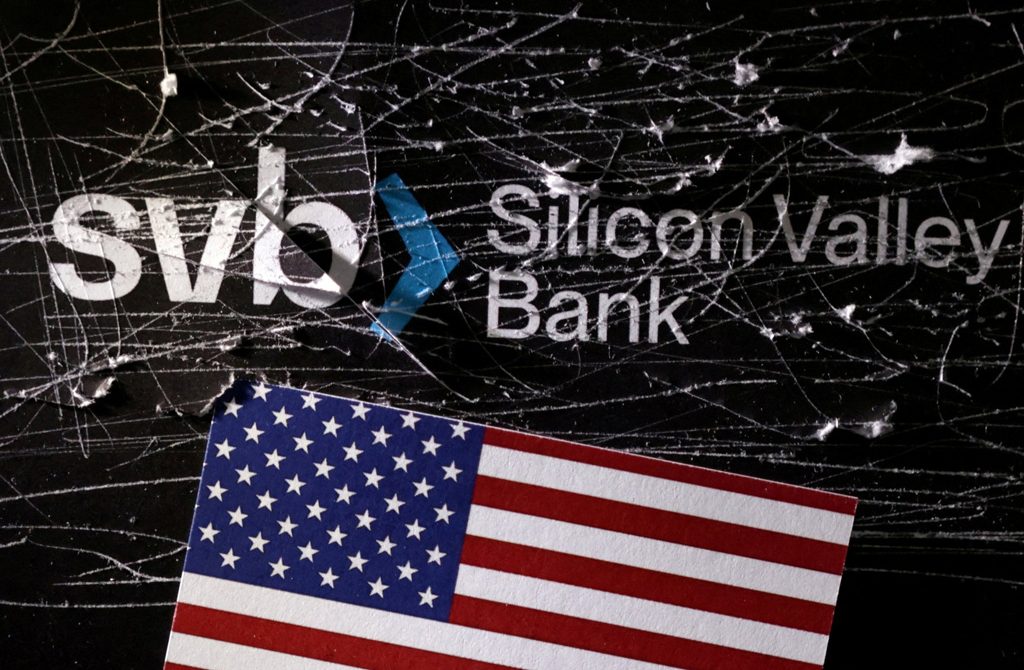2022 will be remembered as the year of uncertainties due to a global tightening cycle and a major war in Ukraine. But on the other hand, the new banking quake in the United States and Europe also offers further warnings regarding the chronic problems and risks associated with the conventional financial system.
The post-pandemic high inflation, increased borrowing and monetary policy divergences have ushered further uncertainties. It is unclear whether 2023 may lead to additional uncertainties or if it will be no different. One thing is for sure, though, even banks in the West are not resilient to rate hikes, political uncertainties or accumulated financial risks.
There is, of course, no widespread banking or a global financial crisis like the one in 2008 today. At least no general liquidity or significant balance sheet problems, as in the Lehman era, are observed today. Banks are also in a relatively strong position compared to 2008. The post-2008 regulations are still largely effective and working.
However, the de-regulation process in 2018 and (especially) monetary expansion steps after the pandemic made the banking system even more susceptible. As a result, even the mighty U.S. banking system is showing signs of cracks nowadays. This time, in the 2023 banking crisis, though, at the center of the problem lies the financial risks accumulated to this day.
Although the tightening decisions and aggressive interest rate hikes by policymakers are right, in its essence, they have also created significant side effects (just like the rapidly decreasing interest rates in the Turkish Economic Model). Unfortunately, however, executives in the U.S. and Europe were not adequately prepared for this tapering tantrum.
At its core, the financial system faced a bank run challenge here. And this banking crisis happens when you don’t do your job right. Therefore, even a moral hazard concern related to bank mismanagement could be raised here. After all, the perception of the banking system in the West is already deteriorating.
When shadow banks, financial shorting and derivative holdings are considered together, the risks and potential losses of the banks are (indeed) much more significant than are considered. The last year’s wave of interest rate hikes (aimed at fighting inflation) was the final nail in the coffin. Correction attempts didn’t work either, and a wave of bank runs followed.
Rate hikes continue
During the expansion wave in 2020, while banks such as Silicon Valley Bank (SVB) loaded up on long-term bonds, the U.S. Federal Reserve (Fed) did not even think of raising interest rates then. But then, they started increasing interest rates aggressively, beginning in March 2022. Hence, while interest rates rise to historic highs in the U.S., banks with growing losses are on the brink of the abyss.
Thus, today, there is a financial crisis mainly triggered by the Fed’s rate hikes that have been going on for more than a year. Because of that, new interest rate hikes will continue to pose unknown risks. As a matter of fact, by the end of 2023, the likelihood of a new recession is also getting stronger.
Other banks, such as the Deutsche Bank, are also under pressure.
With this in mind, these types of potential unrest are not expected to eat away all banking systems, but mainly the weakest links on the periphery. This bodes well that common financial risks may not be too high. Still, despite no systematic banking shock or a crisis like that in 2008, banks face relatively high risks today.
On the other hand, the Fed’s rate hikes were also a warning factor that revealed beyond the tip of the iceberg. For example, in the U.S., unrealized losses (accumulated over time but not recognized yet) due to asset depreciation amount to $620 billion, according to the Federal Deposit Insurance Corporation (FDIC). According to some other accounts, these losses amount to somewhere between $1.5 trillion and $2 trillion. That is also part of the reason international organizations reiterate their warnings to member economies.
However, the future of this panic will most likely depend upon the steps taken by the regulators, the market perception and the policymakers’ signals. It will depend on the market’s liquidity conditions, the investor’s risk appetite, the search for returns, and how much more risk the bank managers are ready to bear with excess return concerns.
Lessons from the crisis
Frankly, these types of banking crises are voiced every now and then. And the reality is that a banking crisis was and should always be expected because modern conventional banks, by their very nature, are prone to go bankrupt. This is mainly because of the current fractional reserve system and especially the risks banks take when the regulations are loosened.
Moreover, technological advances have also exacerbated this worsening situation. New technologies have not changed conventional banking, but it has made them more vulnerable and fragile. For instance, mobile applications have made it much easier to withdraw money now, and the information flow is also much faster thanks to new-generation mass media platforms. That is why the recent banking failures is also called “the first social-media-fueled bank run.”
Meanwhile, this is undoubtedly no 2008 Global Financial Crisis either. Banks are in a much stronger position today regarding their capital adequacy ratios, thanks to new regulations and laws of the post-2008.
Yet, although the apocalyptic impacts fears are not rational, there is still much to be concerned about. Financial asset prices (due to the ultra-loose monetary policy) were expected to lead to distress in the financial system anytime in the future. And it did happen, unfortunately.
One should also remember that in the 2023 banking turmoil, financial regulations (the de-regulations of 2018) and easy money-related issues (especially of the post-pandemic era) were at the heart of this turmoil. And hence, came the relatively accelerated run on banks or the run on deposits.
Solvency issues due to the excessive long-term, low-rate bond holdings and the resulting hidden losses are a crucial story of this 2023 banking panic. No hedging against these rising risks (e.g., having insurance as in the interest rate swaps) in the U.S. banks’ case is also noteworthy.
That said, the so-called shadow banks, derivatives, and accumulated mark-to-market losses are each genuine threats. In addition, the type of new-generation banks that function as regular banks, but are not regulated at all, are a real financial threat. Finally, short-selling on stocks is another critical issue, and the short-sellers will likely win big-time.
Part of the story is also a moral hazard related to risk mismanagement and the top management’s involvement in supervising their own banks. They even played a leading role in repealing the Dodd-Frank Act of post-2008. Not to mention that this act, in particular, played a substantial direct role in the 2023 banking turmoil.
This is indeed a “deja vu,” considering the Gramm-Leach-Bliley Act of 1999 that repealed the Glass-Steagall Act and ended the regulations separating commercial and investment banks in the U.S. In that case, the authorities were letting the commercial banks in the U.S. make risky investments, which paved the way for the 2008 crisis.
What to expect looking forward to?
So, is a new global financial crisis exacerbating? The fragility in the U.S. banking and monetary system are indeed containable with the proper policy measures. However, sometimes, these policy responses also lead themselves to anxiety and instability. In that sense, forward-looking expectations depend upon prospective regulations, signals, and the bank managers’ attitudes.
One could also wonder what this financial turmoil means for countries like Türkiye. However, for now, Türkiye does not yet have such risks. Türkiye, in particular, has a much more robust banking system thanks to the 2001 banking crisis and the subsequent regulations. That said, regulations, monetary policy decisions, and risk management risks should all be taken more seriously.
Yet another critical issue, at this point, is the concern or question of whether or could the recent banking turmoil have financial contagion toward the emerging markets as well. Could, for example, the economic crisis triggered by the collapse of a major bank in the U.S. also have repercussions for other emerging market economies?
The current banking turmoil in 2023 is reminiscent of the 1907 banking crisis, which led to the creation of the Fed system in 1913. However, regarding the policy responses, we should expect new measures such as full deposit insurance to be debated more often. Furthermore, depositors should probably not be directed toward the “too big to fail institutions” either. Large, inefficient and too-big-to-fail financial institutions require much more extensive and costlier government or public institution interventions or bailouts during the financial panics.



